Key takeaways:
- Songwriting awards validate artists’ hard work and inspire community growth through recognition and networking opportunities.
- Collaboration enhances creativity by incorporating diverse perspectives and fostering lasting relationships within the artistic community.
- Setting clear collaborative goals aligns the creative process, encouraging experimentation and innovation among artists.
- Effective communication and embracing differences are essential for overcoming creative blocks and enriching artistic expression.

Understanding songwriting awards
Songwriting awards celebrate the creativity and effort that goes into crafting music and lyrics. I distinctly remember the excitement I felt when I received my first nomination; it was a validation of my hard work and passion. What drives artists to pursue these awards? Often, it’s the desire to be recognized among peers and to inspire others in the songwriting community.
These awards recognize various aspects of songwriting, from lyrical depth to melodic innovation. For instance, I once collaborated with a fellow artist on a song that eventually won an award for its poignant storytelling. That experience taught me that songwriting isn’t just about individual talent but also about how we can elevate each other through collaboration. Isn’t it fascinating how moments of connection can lead to such impactful art?
Moreover, songwriting awards often offer networking opportunities, which can be invaluable for emerging artists. I recall attending an awards ceremony where meaningful conversations sparked collaborations that reshaped my artistic direction. Isn’t it amazing how one event can change the trajectory of your career? Understanding these nuances helps to appreciate what songwriting awards truly represent beyond just accolades—they highlight community, growth, and the shared journey of creativity.
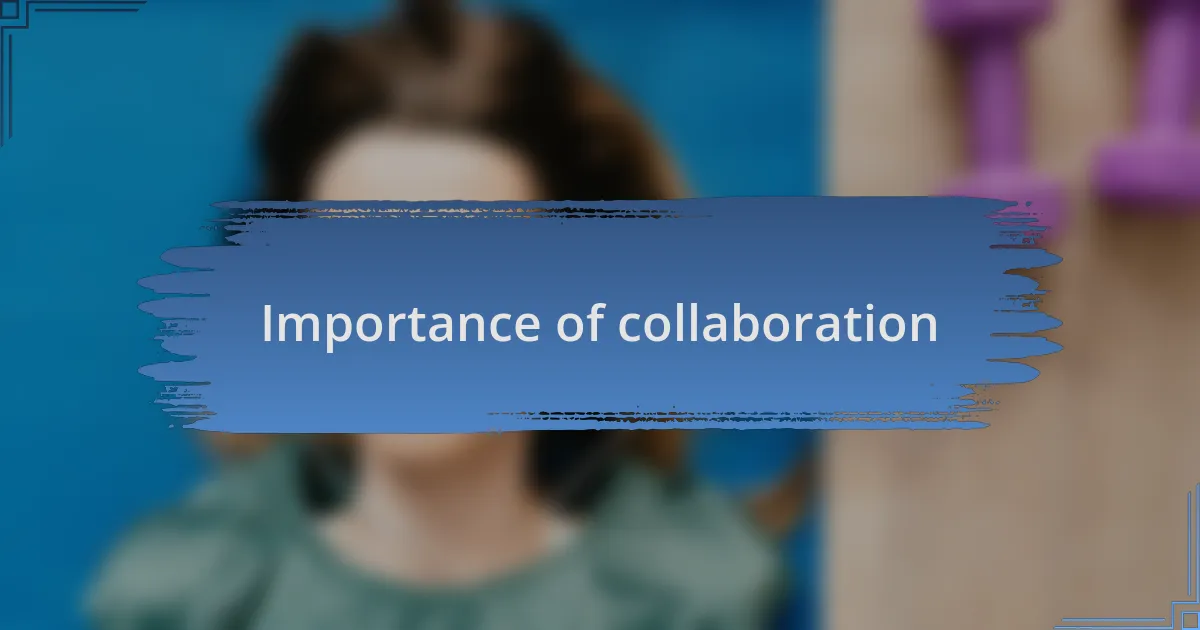
Importance of collaboration
Collaboration is crucial in the creative process. I remember the first time I sat down with a group of talented musicians to write a song. Their unique perspectives challenged my ideas and pushed me to think outside the box. This experience made me realize that different viewpoints can transform a good song into something extraordinary.
Working with others enriches the songwriting experience. I once teamed up with a lyricist whose words resonated with deep emotions. Together, we crafted a piece that expressed feelings I struggled to articulate on my own. Can you imagine how powerful it is when collaboration helps bring unspoken emotions to life in a song?
In addition, collaboration fosters a sense of community. I often reflect on how connecting with diverse artists deepened my understanding of music. Each collaboration I’ve undertaken has not only resulted in new songs but also lasting friendships and a supportive network. This shared journey is what makes the creative process so rewarding.
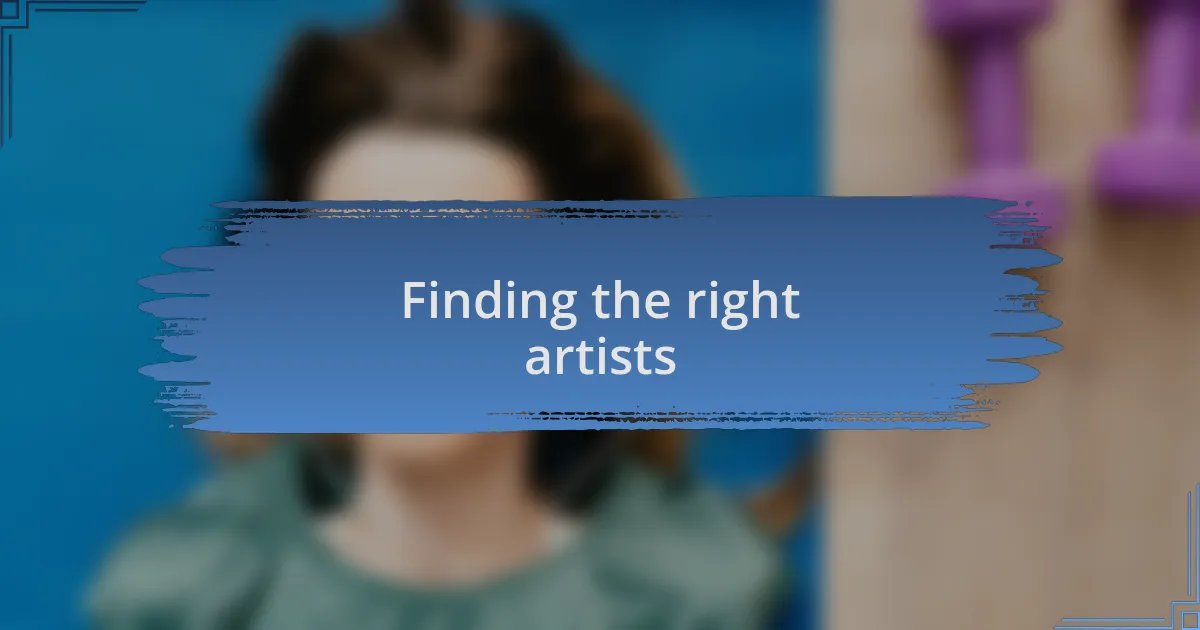
Finding the right artists
Finding the right artists can sometimes feel like searching for a needle in a haystack. I recall a time when I was looking for a co-writer for a project that meant a lot to me. After several meetings with distant acquaintances, I finally connected with a singer-songwriter whose passion mirrored mine, and it was as if the music just flowed naturally from that moment. It reinforced the idea that the right chemistry is essential for successful collaboration.
When I’m assessing potential collaborators, I pay close attention to their work ethic and creative vision. I’m drawn to artists who challenge me—those who inspire me to stretch my boundaries. For example, teaming up with a musician who had an avant-garde approach to sound helped me incorporate unexpected elements into my writing. It’s fascinating how collaboration elevates my artistry when I find someone willing to explore new territories together.
Sometimes, it’s about chemistry beyond just the music. I learned this when I started working with an artist I had known for years but never partnered with creatively. Our shared history allowed us to communicate effortlessly, leading to an intuitiveness in our songwriting that I hadn’t experienced before. Have you ever collaborated with someone who felt like an extension of your own creativity? It’s in these connections that I find the most rewarding musical experiences.
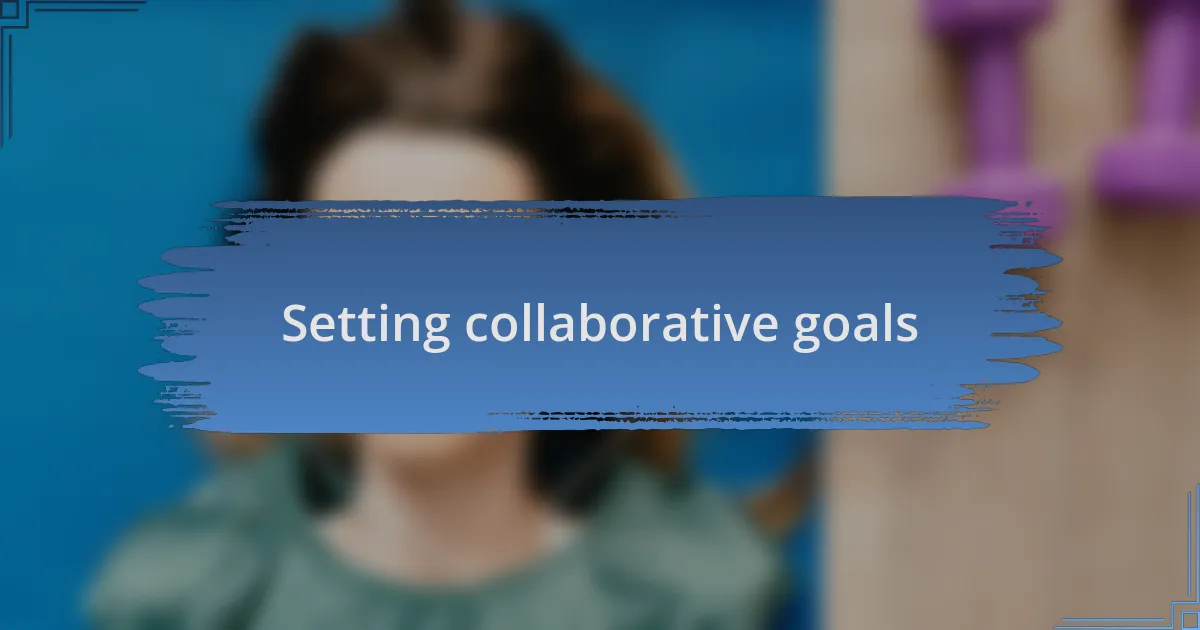
Setting collaborative goals
Setting clear collaborative goals is a crucial step that can guide the entire creative process. I remember a time when I sat down with a band I had just joined, and we spent hours discussing what we wanted to achieve together. By defining our vision—like aiming to create songs that resonate with younger audiences—we laid the groundwork for everything that followed.
In another instance, I partnered with a fellow lyricist who had a knack for storytelling. We agreed on a goal to write songs that not only entertained but also provoked thought and emotion. As we brainstormed, we constantly referred back to our initial objective, which kept us aligned and focused. What I’ve found is that having these specific targets not only enhances our creativity but also helps in measuring our progress along the way.
It’s fascinating how collaborative goals shape the chemistry of the group. When I collaborated with a producer known for pushing boundaries, we established a shared goal of fusing genres. This focus encouraged us to experiment and take risks, ultimately leading to a sound that was fresh and invigorating. Have you ever set a goal with a collaborator and felt it propel your creativity to new heights? It’s in those moments of clarity that true innovation happens.
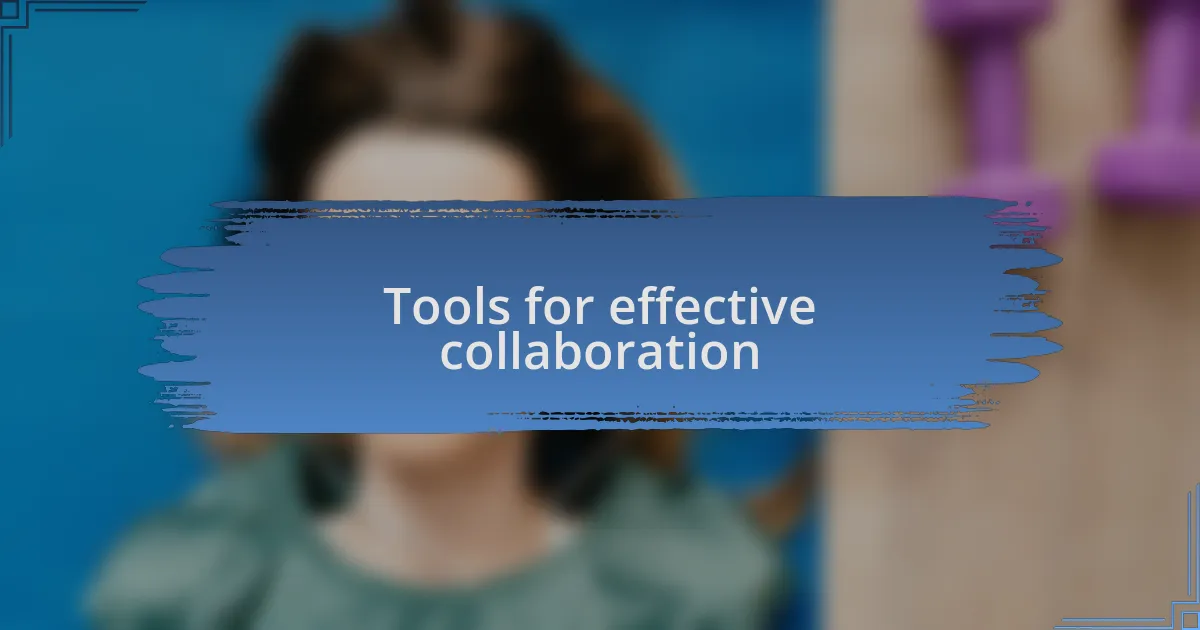
Tools for effective collaboration
Collaboration tools can significantly enhance the creative process. For example, I’ve found that using platforms like Google Drive or Zoom not only streamlines communication but also allows for real-time editing and feedback. There was a memorable session where my co-writer and I were able to compose a song together despite being miles apart. With shared documents open, we could seamlessly build on each other’s ideas, which added a layer of spontaneity that I truly enjoy.
In my experience, a good old-fashioned songwriting session is irreplaceable, but combining it with technology can yield remarkable results. During one particular project, we utilized apps like Splice for sound design collaboration. I felt an exhilarating rush as we mixed our different styles into a unique track. Have you ever felt that spark when technology helps you realize your creative vision? It’s those magical moments that remind me how effective tools can elevate our artistry.
I also place great value on communication apps like Slack. Creating a channel for our songwriting group allowed everyone to share thoughts, ideas, or even random lyrical snippets anytime inspiration struck. I recall a time when an impromptu idea shared late at night transformed into our album’s lead single. It makes you think: how often do our best ideas thrive in open dialogue? Collaboration tools facilitate this kind of connection, bringing our creative energies together in truly inspiring ways.
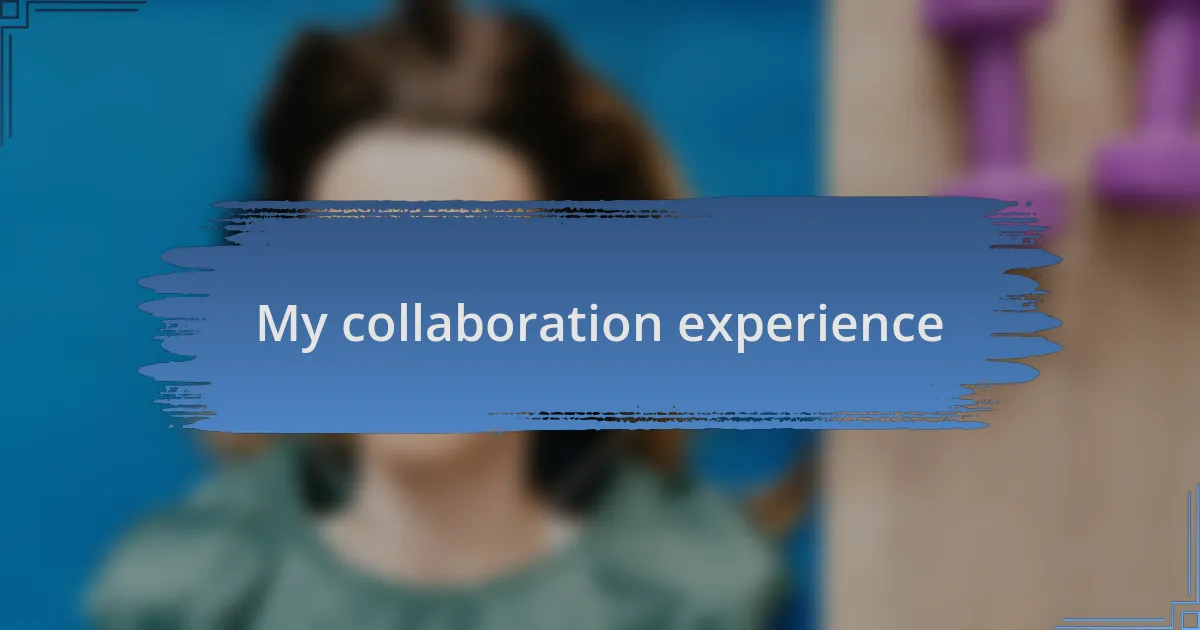
My collaboration experience
Working alongside fellow artists has been one of the most enriching experiences in my creative journey. I remember collaborating with a talented vocalist who brought an emotional depth to our project that I hadn’t fully tapped into before. During those late-night sessions, her voice transformed our initial lyrics into something transcendent, igniting a new level of passion in me. Have you ever felt that surge of inspiration when another artist pushes you to see things differently? It’s truly energizing.
On another occasion, I teamed up with a music producer who had a knack for bouncing ideas around. We spent hours experimenting with different chord progressions and sounds, simply exchanging what felt right. I found that the more we experimented, the more we uncovered unexpected sonic gems. It made me realize that sometimes, leaving the comfort zone opens doors to innovations we never anticipated. How often do we allow ourselves to play and explore in our craft?
Collaboration also means accepting vulnerability, and I’ve learned to embrace that. During one writing session, I shared a raw piece I had been hesitant about, fearing it was too personal. Instead of judgment, I was met with understanding and encouragement. That moment taught me that collaboration can be a safe space for authenticity. Have you ever opened up creatively and felt the collective strength that comes from shared vulnerability? This aspect of collaboration deepens connections and enriches our storytelling.
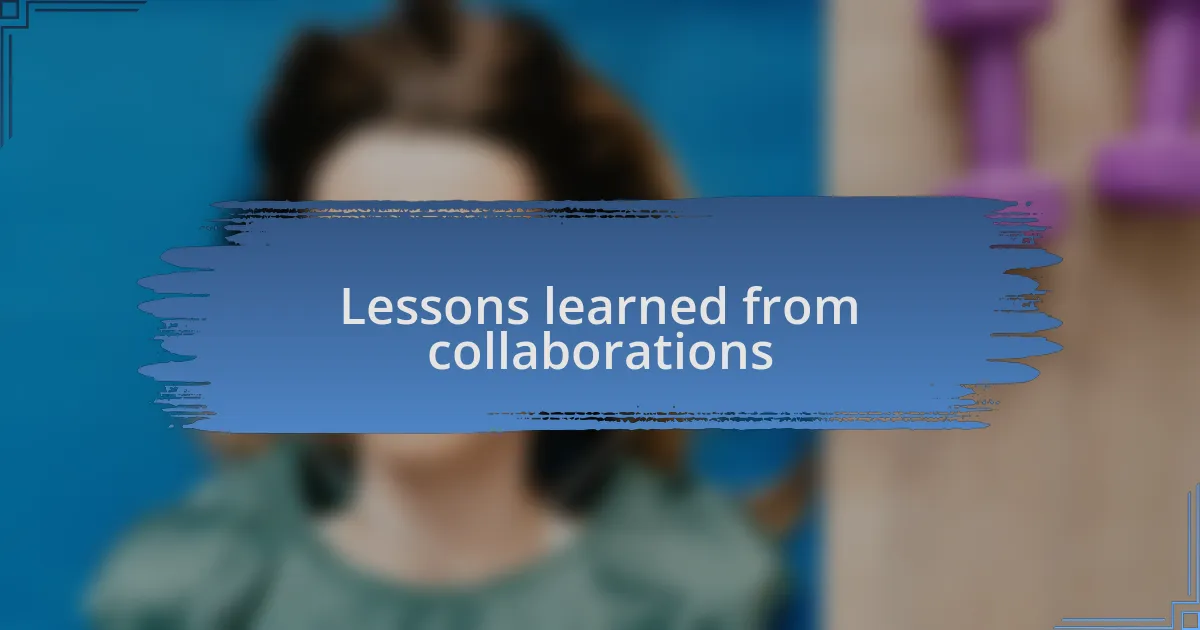
Lessons learned from collaborations
During my collaborations, I learned that communication is key. One time, I worked with a guitarist whose style was considerably different from mine. Initially, we struggled to align our visions, but as we openly discussed our ideas and preferences, the project took on a harmony I hadn’t anticipated. Have you ever experienced that thrill when a simple conversation breathes new life into your work? It’s a reminder that clarity in intention can unlock creativity.
Another lesson I’ve absorbed is the importance of patience. In one project, we encountered a creative block that felt stifling. It was tempting to push through, but I realized that allowing space for ideas to marinate ultimately led to breakthroughs. I often think back on that experience and ask myself: Are we giving ourselves enough time to explore the depths of our creativity? There’s power in stepping back.
Lastly, I discovered that embracing differences is a catalyst for growth. Working with an artist whose background and influences were completely different from mine opened my eyes. Our contrasting approaches resulted in a fusion I could never have created alone. How often do we seek out perspectives that challenge our norms? Sometimes, it takes a fresh viewpoint to ignite a creative spark, proving that diversity enriches our artistic endeavors.